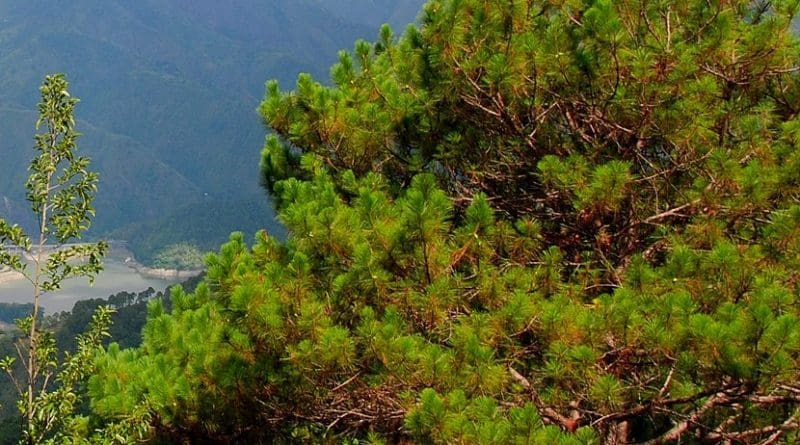Pine Needles: Untapped Energy Source – OpEd
As a kid growing in Baguio City, Philippines, with co-Tom Sawyers and Huck Finns, we used to chew green pine needles while killing time after hunting for wild guavas, blue berries and violet masaps or passion fruits in the hills of Quirino.
This we did chewing it alternately with “alingkamas bakes,” a small tuber that grows alongside “panaws “or cogon grass”. This tuber may reach the size of a marble exudes sweet juice tasting like turnip and many a time saved us poor kids from gnawing hunger.
When I say poor, I refer to the native families in the subdivision where I stay. Our neighbors were affluent outsiders who were mostly from Manila’s suburbs but own large vacation houses in our place, some who, lord over locals, whenever they come summertime.
Pine Needles as Medicine
The green pine needles taste between a stringy and salty, somewhat bitter but you get the hang of it after munching five or six needles. It may pucker the mouth, numb the tongue, and constricts the throat of first timers. This taste is caused by astringents such as tannins and lignins of the pine tree.
Our pine needles come from the Benguet pine or Pinus insularis that grows in Benguet, Mountain Province, Abra, Kalinga, Ifugao, Nueva Vizcaya, Ilocos Sur and some parts of Ilocos Norte.
Pine needles are most important to us poor kids. We start cooking fire using it, roast sweet potatoes with it, stuff them in sacks to serve as pillows insert them under cartons to soften our beds and insulate our shanties with them to keep us warm.
My great grandma made a boiled pine needle tea for us when we got colds, coughs and the flu. She said it is good medicine, because the pine tree is God’s or Kabunian’s gift to the Igorots. Ikit Mad-an used to boil pine needles at great length, scooping the oil that floats with a spoon and rubbed it on her rheumatic-ailing legs. She was 105 when she saw her last sunset.
Indigenous Crop Preservation
Fortunately for me, before she left, she showed me how she kept weevils out from our sweet potato storage bin. Ikit always covered the bin with pine needles. The bin was often raided by my older brother Bony who taught me how to roast sweet potatoes with pine needles. Many an evening was spent covering sweet potatoes with pine needles, roasting them and turning upward the uncooked portion, adding more pine needles and waiting for the last glowing needle embers to die down to get a fairly cooked tuber.
Ikit likewise kept her bean, corn and squash seeds in a can laced with pine tree resin and bits of saleng or pine flintwood. She would hang her can on top of the hearth.
When cooking pig food, I used to study evenings by a wood fire, my family too poor to pay for electricity, I made a bed by laying out flat planks of pine slabs, layered it with about 4 inches of pine needles and topped it with a carton. This way I could sleep anytime when I get tired reading/studying.
Little did I know that one day these pine needles would give electric light in the future.
Developing Power from Pine needles.
Pine needles can be a medium of economic self-reliance especially for the women in the Philippines Cordillera region. The pine forests of the region which are pine needle-resource rich can become a source of power generation along with generating income for the people.
In Uttarkhand India, pine needles are used to generate electric power. The same can be done in the Philippines. If we look at the geographical terrain of the Cordillera, the pine forest are sizeable.
Out of the total land area of 1,81 million hectares, some 442,000 hectares are pine forests. The pine needles start shedding before the onslaught of summer season and become a major cause for forest fires during the summer season. The fire spreads rapidly in any mixed forest and engulfs the whole forests resulting in damage to the flora, fauna, farms and wild animals.
The government can use pine needles effectively and through its commercial use to generate electricity and bio fuel. The government will establish briquetting and bio-fuel units in the province of Benguet and Mountain Province. The pine needle will be processed to generate electricity. The bio-fuel units will be run by self-help groups, industrial organisations, cooperatives, farmers organizations and NGOs.
Pine needles can become the medium for employment and women empowerment women. Women will get employment by collecting the pine needles from forest to the collect centre and by doing this the women will be able to earn from their homes and become economically empowered. The role of women groups will be strengthened.

